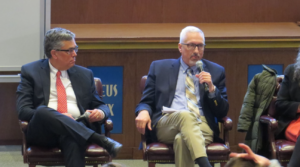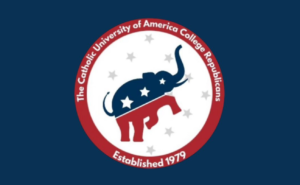Partisan Controversy Over Widespread Mail-In Voting

Courtesy of thenation.com
By Eva Lynch
The possibility of widespread voting by mail represents the next in a slew of freshly partisan issues induced by coronavirus restrictions.
Voting by mail is not in fact a new or foreign method of casting a ballot: college students or others living outside the state in which they are registered to vote cast absentee ballots every year around the country. Thus, the controversy, and suddenness thereof, surrounding the universalization of this method may confuse many voters. Primarily, the partisan controversy manifests in support by Democrats and opposition from Republicans.
It is inevitable that more votes will be counted than ever before if vote-by-mail methods are introduced, as many people are not able to vote under normal circumstances. Those who will take advantage of more widespread mail-in voting include many low-income Democrats who cannot afford a day off of work to stand in line and vote. Thus, Republicans argue that generalizing this system would award Democrats an unfair advantage. This notion has been debunked by the most recent research from Stanford University’s Institute for Economic Policy Research.
Republicans have also expressed concern over an increased possibility for fraudulent ballots to be mailed in. Democrats have responded to these concerns with hopes that generalizing a mail-in voting system will mitigate the threats of a coronavirus infection that are dramatically increased by large gatherings, like those created by in-person voting. Specifically, the hope is that this system would most benefit vulnerable populations, such as nursing-home residents or those with pre-existing conditions.
The partisan nature of this issue can best be seen through the equivocal language used by both parties: what Democrats see as “community ballot collection,” Republicans see as “ballot harvesting,” a malpractice which drastically increases the risk of voter fraud, especially in those vulnerable populations. However, the relevant data shows that while voter fraud is slightly more probable with mail-in voting practices—though the risk of voter fraud is relevant to all methods of voting—the disparity is negligible, especially when considered alongside the vast number of voters who would not otherwise be able to cast a ballot.
While the experts, like CEO of the National Vote At Home Institute Amber McReynolds and Director of the MIT Election Data and Science Lab Charles Stewart, do not doubt that instituting vote-by-mail practices around the country will present challenges, they maintain that concerns of vote-by-mail fraud should not be included in states’ considerations of whether to generalize vote-by-mail practices. McReynolds’ and Stewart’s analysis shows that of the 250 million mail-in ballots collected over the past 20 years, only 143 have resulted in convictions of vote-by-mail fraud.
The 22 Republican and 24 Democrat governors of the states that currently offer mail-in voting do not reflect the partisan nature of this issue. However, the four states that do not offer this method are led by Republican governors, and some, like Texas, are engaged in public court disputes to retain the limitations of what they already offer.
This enthusiastic pushback does accurately reflect the partisan pushback around the country, which is anchored by Republican governors and senators, and, most notably, President Donald Trump. The issue of mail-in voting quickly gained traction as a divisive issue when Trump’s defamatory tweets about California’s decision on the issue drove Twitter to place a “fact-check” on a selected few of his tweets. Trump, despite having voted by mail many times himself, has voiced his hostility towards a mail-in voting system and has publicly supported the efforts of governors fighting against such a system, specifically those in Texas.








